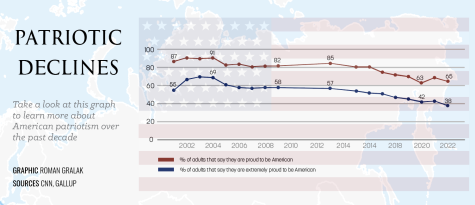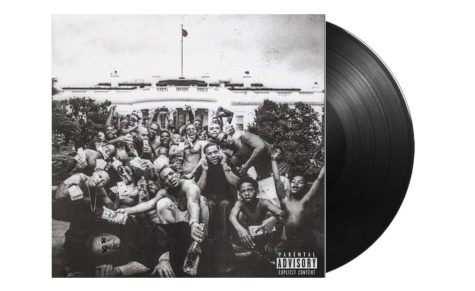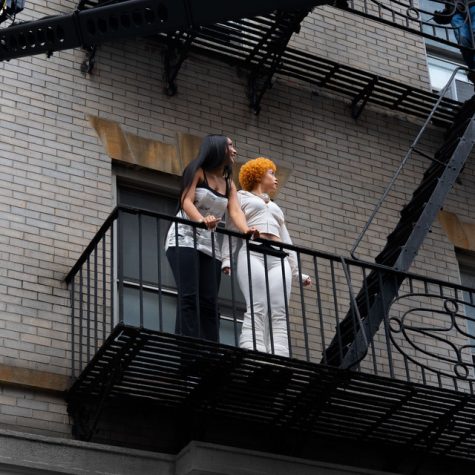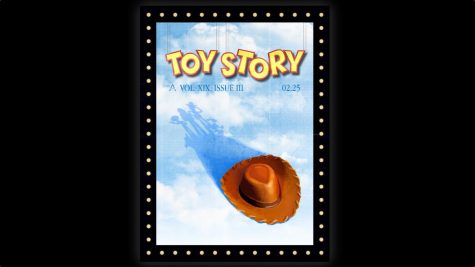One Man’s Trash
The key conflict featured in Toy Story 3 is the donation of a group of toys that become separated from their original owner, Andy. In the film, Andy has outgrown his toys and they are left behind and then donated to a daycare. As reflected by this movie, donations give items a second chance before they are thrown away and lose their value and purpose.
In a school of over 5,000 students, CHS is constantly involved with donations, whether that is to help individuals in the community or larger organizations. For Ridhi Dondeti, head of the Carmel Mayor Youth Council (CMYC) toy drive and sophomore, donating gives an opportunity to help others have more access to get the things they need.
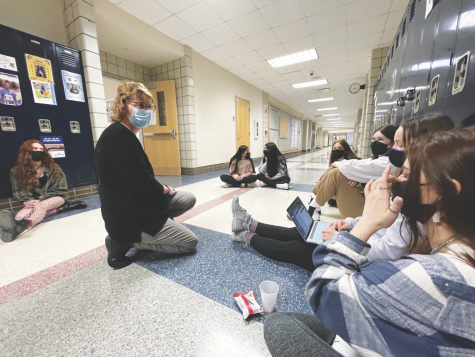
Photo: Luke Miller
“Every year, CMYC runs the toy drive and last year we couldn’t run it. So this year, we decided to put it back up again and help. Mainly the thing is to help kids in need, especially during the holiday season, because lots of people won’t get gifts or toys or anything that they need,” she said.
She said besides helping other people, donating is also less wasteful than throwing things away.
“I think (donating) is helpful mainly for people because they don’t have to go to places (to buy) used stuff, because we’re already giving these toys that are donated,” Dondeti said. “I guess it helps the environment in a way that people aren’t getting (more) in terms of plastic and stuff. It’s not all being super wasted, because people would be using these toys and some of them are actually helpful.”
Dondeti also said donating is a more positive option to throwing things away.
“I think (donating) is useful especially because people would just (be) putting these things to waste and not using them for a good amount of years. Now they can give them (away) and other people can use them,” she said.
Maanya Rajesh, Green Action Club (GAC) leader and senior, said the GAC is often involved with donation drives throughout the school year. Like Dondeti, she said donating benefits those who may be looking for things they need.
“At the end of the year, there’s a bunch of school supplies that people have that are unused, like locker shelves, all those types of things, like paper notebooks. So we don’t want all that to be wasted and go into landfills so we collect all that and then we donate it to various organizations. And first things like locker shelves, we actually keep them here and so new freshmen coming in, if they don’t have them or if they aren’t able to afford any, they can just go down to the bookstore and grab some free school supplies,” she said. “Instead of someone having to go and buy a brand new notebook when there’s already paper here that is unused, they can use that. And some people don’t even have the means to be able to purchase that stuff, so really a lot of those donations were going to underprivileged kids.”
However, according to Assistant Principal Amy Skeens-Benton, who organizes the annual Dress Drive, donations don’t always involve those who are unable to afford something.
“It might not have to do with a financial issue. It could have been last minute,” she said. “In particular, this is the one closest to my heart, (there was) a young lady whose mother had passed away and so she really didn’t have someone to go out and help her go look for a dress or to help her pick it out or know how to do her hair. I actually didn’t know (her mother was gone) when she asked me initially and asked if she could go get a dress with me. Then I found out actually after we had picked out a dress and she said, ‘I, right now, I don’t have a mom and I don’t know how to do my hair,’ so I helped her do that.”
Skeens-Benton said donating is also an act of kindness which creates a ripple effect.
“I hate waste in the first place. I actually found a letter from a young lady who had borrowed a dress and she talked about how she gave the dress back and why she gave it back, and it was that because she felt like people were willing to help her, she wants to help others. It actually created this snowball effect where she was like, ‘Now, I want to go out and help others because I know how important it was to me,’” she said.
While donating assists people in the community and provides a way for them to find and obtain necessities, according to junior M Yoneyama, they also help the environment.
For Yoneyama, helping the environment plays a large role in the decisions they make and they said it is important to reuse and recycle old belongings. They also said they always try to purchase pre-used things and give away their own old belongings to others, since donating gives items another chance before they become waste.
“I usually thrift if I need things,” they said. “Buying second-hand items gives them a second life and there’s some really cool things to be found at thrift stores. I’d rather buy pre-used items to avoid buying from fast fashion and to keep things from ending up in landfills. (It’s typically cheaper too, which is always a plus!) Sustainability and the environment definitely played a huge part in my decision to try to buy more second-hand items.”
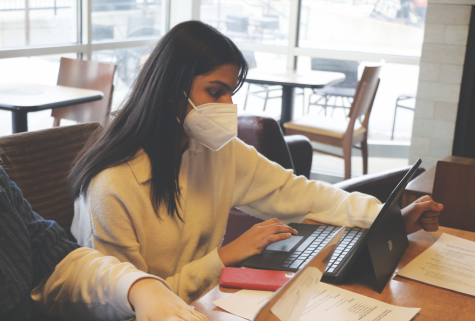
Photo: Chenyao Liu
Like Yoneyama, Rajesh agrees on the importance of sustainability. Rajesh said donations are important for the environment because of their correlation with sustainability.
“When you’re donating, you’re allowing for there to be a circular economy, which is sustainable,” Rajesh said. “Instead of having all these products go to landfills, by you being able to kind of reuse them, rehome them, that’s kind of ending this cycle of not ending it, but it’s kind of inhibiting this cycle of consumerism, where people just go and buy and buy and purchase new things.”
Rajesh said donating can help to avoid the consequences that follow throwing belongings away. She said once items are thrown away and go to landfills, they negatively impact the environment.
“(Thrown away belongings are) going to basically pile up in landfills. And that’s overtime, going to emit a bunch of really bad emissions and chemicals, especially a lot of times, they’re gonna burn that waste. So that’s like methane, carbon dioxide, really bad gases that are going to be emitted into the environment, which further fuels climate change,” she said. “So that’s why we want to kind of donate and keep all these materials and clothes and things that don’t really need to go to the landfill out of the landfills and have a circular economy (which is) basically, we’re just gonna keep on recycling all the goods that are produced and so they’re not all like, piling up in landfills.”
Green Action Club (GAC) sponsor Carey Anderson said she agreed with Rajesh. She said the GAC organizes donation drives to help with sustainable recycling or disposing of materials that would often be thrown in landfills.
“What we did with the holiday lights (drive) is instead of putting it in the trash, we donated it to a specialty facility called Tech Recyclers, and their job was to take it and undo all those different pieces of the strands and almost 90% of that strand of lights that just usually would go in the trash, they could reuse. I think that’s cool,” Anderson said. “(In October), when we collected just candy wrappers because of Halloween time, we were able to return that to a company that doesn’t put it in the landfills, but uses it and reuses it. I really think that tapping into all of those different avenues helps us all be more sustainable.”
Overall, Rajesh, Anderson and Yoneyama agreed donating old items was beneficial to the environment.
“I think sustainability is important to give back to the earth,” Yoneyama said. “It provides for us, so why not do everything we can to keep it safe?”


